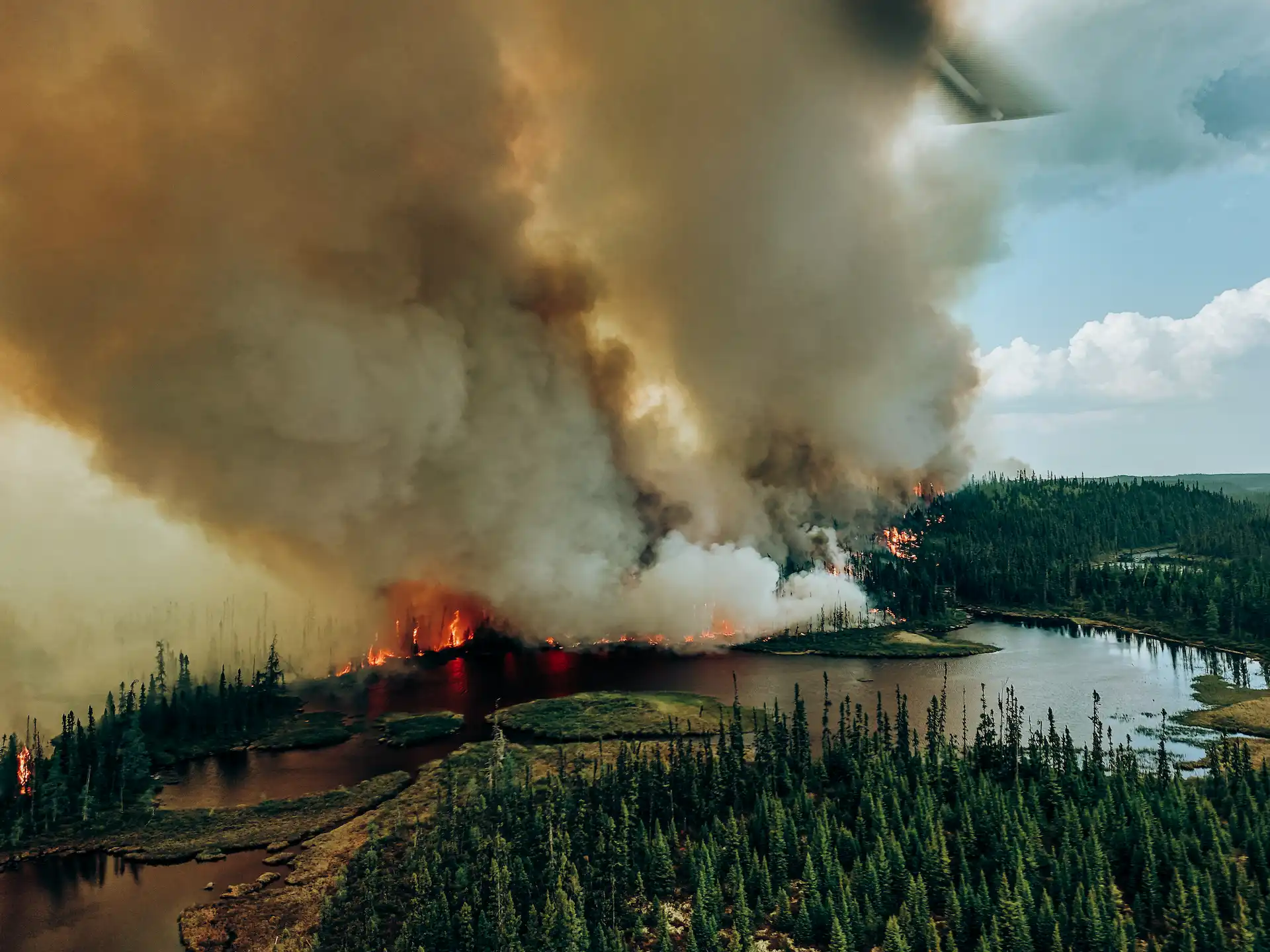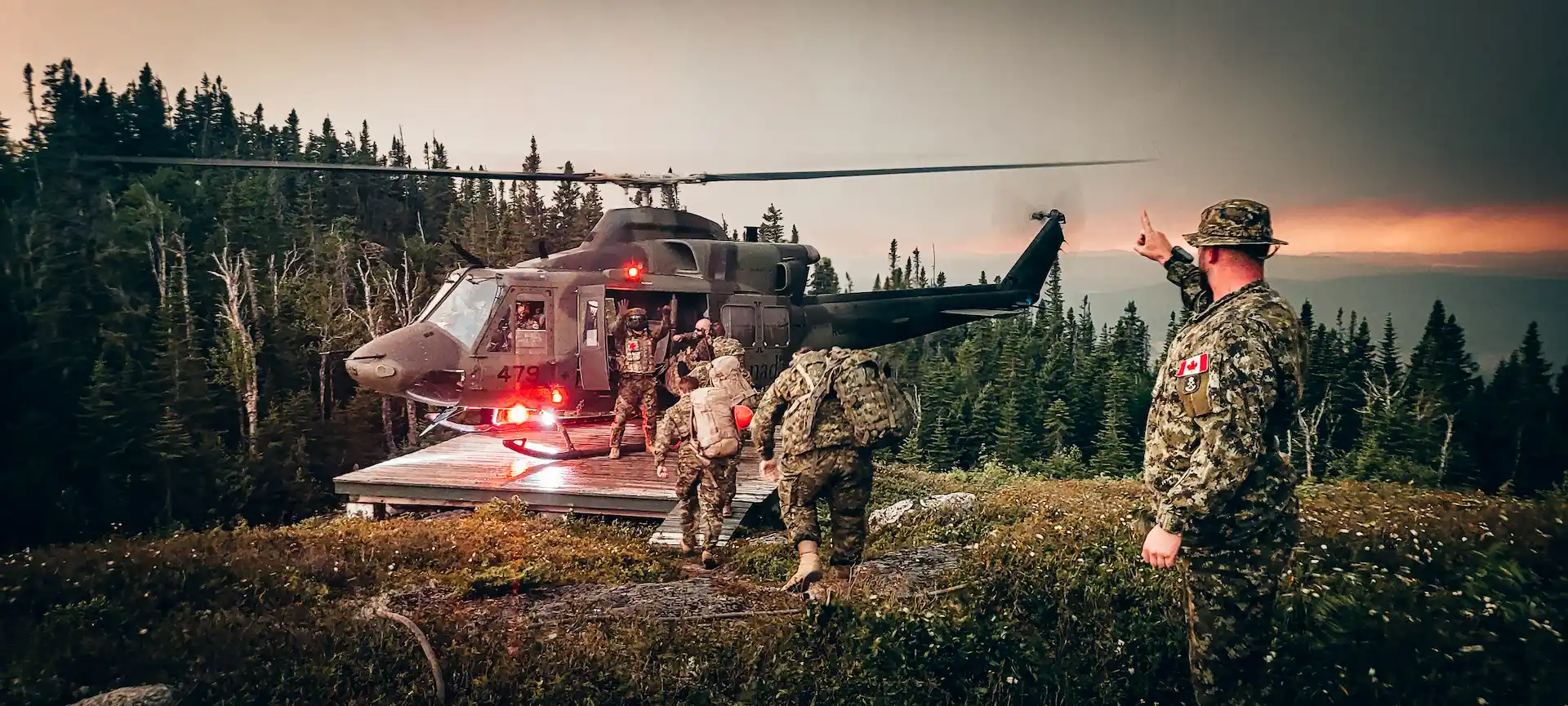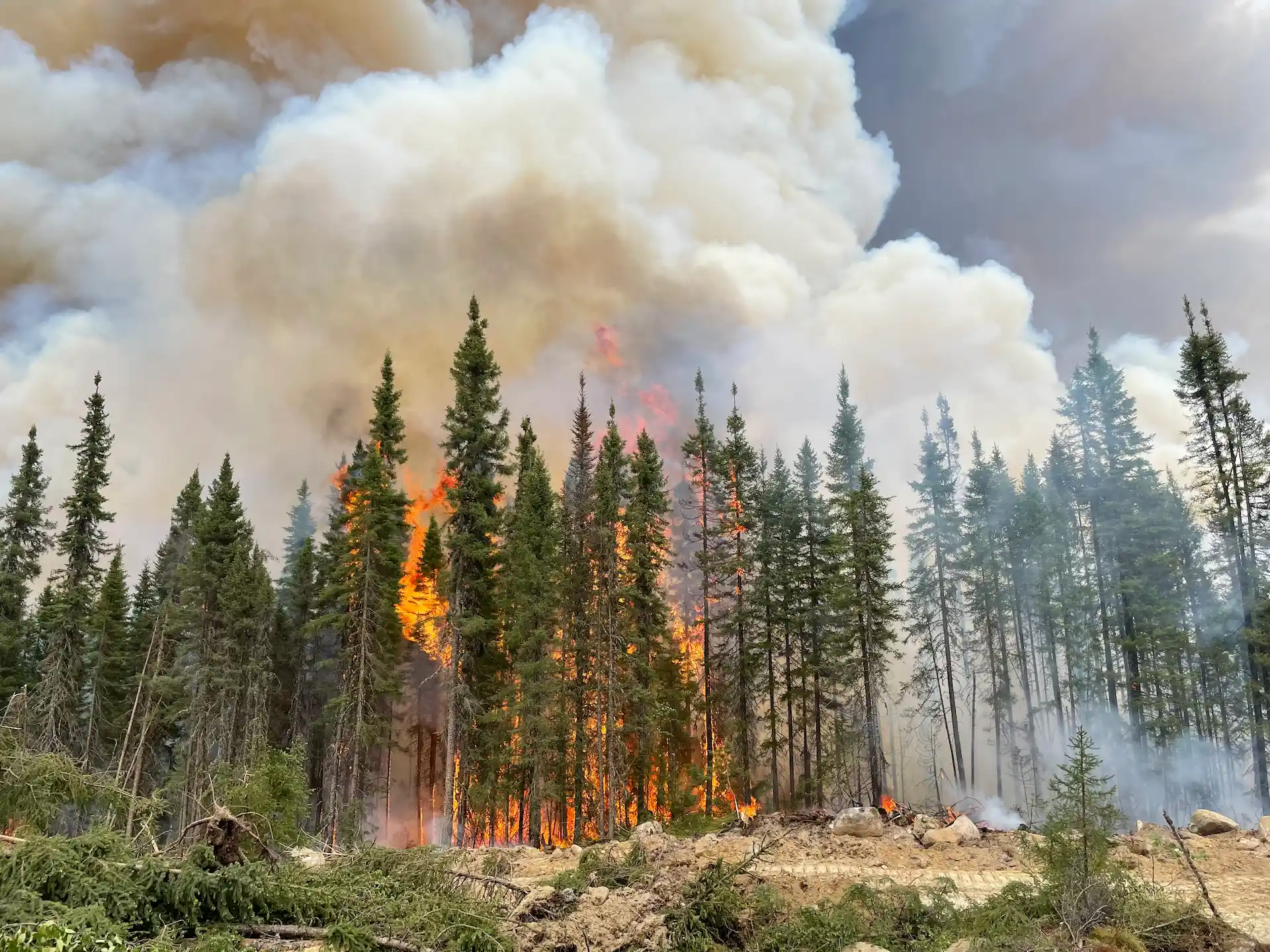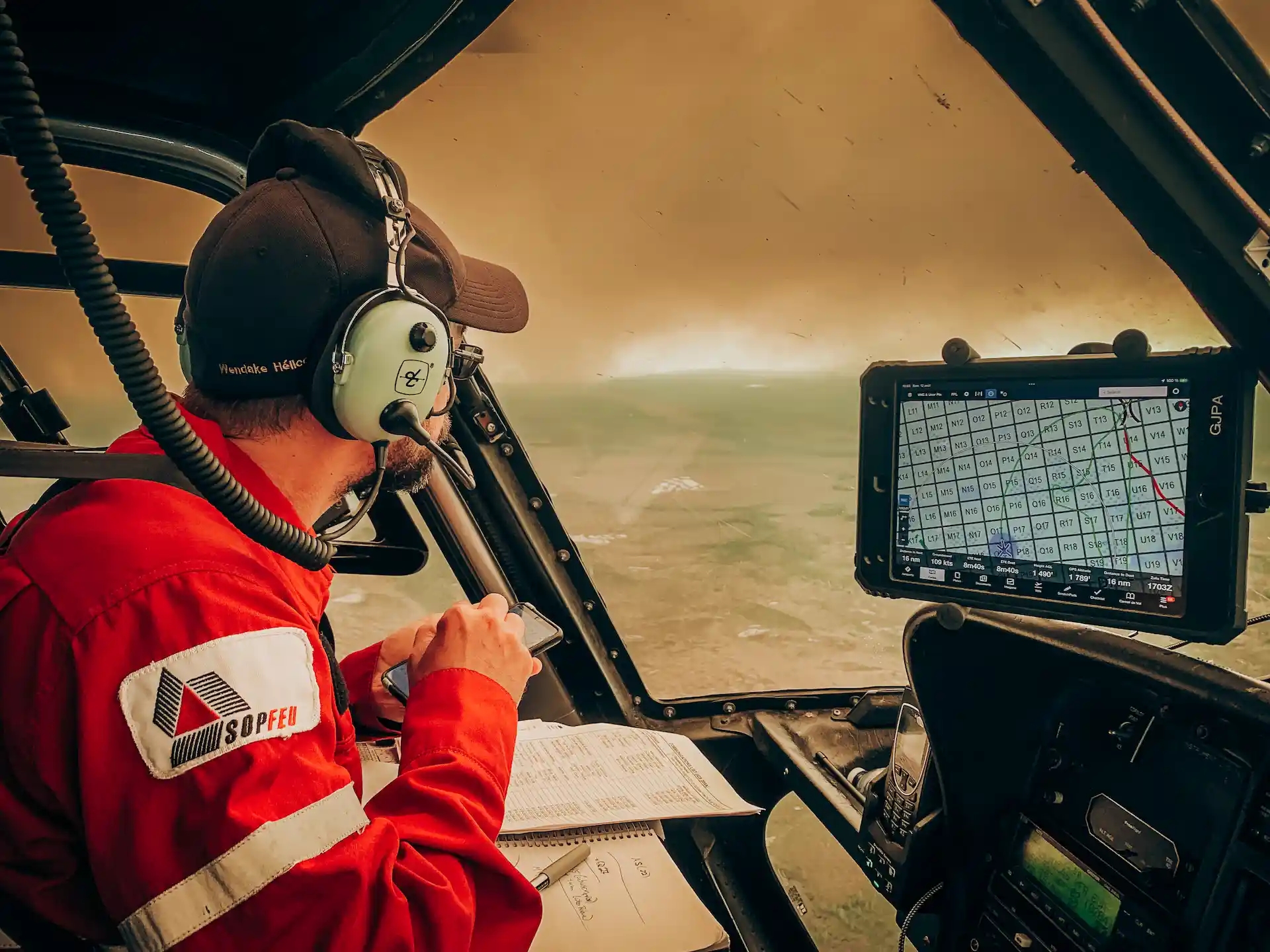Canada is used to dealing with wildfires, as numerous blazes proliferate during its annual fire season. Quebec’s 2023 season however, produced an unprecedented number of wildfires that challenged every facet of the province’s resources and organizational structure.
In a recent presentation Luc Dugas, Provincial Fire Center Director for SOPFEU (Société de Protection des Forêts Contre le Feu – Quebec’s Provincial Forest Fire Control Agency) recounted the province’s devastating 2023 fire season, discussing how the challenges were met and what efforts have been, and are being, made to ensure such extreme situations are effectively managed.
Quebec’s Problem
Quebec is Canada’s largest province, at just over 1.5 million square kilometers. It is divided into two regions for wildfire fighting; the over 45 million-hectare Intensive Zone to the south in which all fires are actively fought, and the 76 million-hectare Nordic or Northern zone where fires are fought according to the threat that they pose to protected values, such as human life, homes and hydroelectric installations. Below the 48th parallel the forest cover is a mix of boreal species, transitioning to predominantly coniferous coverage further north, so fires have a plenitude of C2 and C3 fuels to burn and this can be a major problem around the northern cities and town that are surrounded by forests.
Responsibility for wildland firefighting in Canada is not federal but provincial and the provinces work together as necessary to share resources. To fulfil its mission, SOPFEU employs more than 500 regular and seasonal personnel, with almost 600 additional auxiliary firefighters also available. Its fleet of 68 aircraft comprises a mix of detection aircraft, bird-dogs, helicopters and CL215/CL415 water-scooping tankers, but during high demand periods, contract aircraft can swell that number significantly. Early detection is crucial to effectively combat wildfires and Dugas pointed out that the large number of detection aircraft (27) is because there are virtually no residents in about three quarters of the province. Aerial observation therefore provides the only viable method of detecting fires early enough to permit a rapid and effective response.
Because the vast Northern zone is so remote from suitable firefighting airfields, SOPFEU operates two airfields purpose-built about ten years ago to protect the forests against wildfires that do take hold. The 4,000ft-long, 100ft-wide Bonnard River (CRB4) and Manic5 (CMN5) gravel strips are private tracks with no supply or parking services. They are used only for firefighting purposes and not maintained during the winter. “Those strips are important for us because the 415s only have a four-hour endurance. If we want to go onto a fire fast but didn’t have those tracks and they had to fly for two hours, they could only drop one load before heading back to the airport,” Dugas explained.

Early Detection
SOPFEU established operational objectives several years ago in an effort to reduce the number of fires and effectively control those that do occur. The objectives include reducing the 10-year moving average of human-caused fires every year, given as Dugas noted, that 75 to 80 percent of wildfires are caused by humans. “When I started in the business 22 years ago, we had about 800 human-caused fires annually but now we are down to about 600, so it is steadily getting better,” he stated. Further objectives are the detection of all fires before they reach a half-hectare in size, and to forcefully attack all fires within one hour of discovery, with the aims of controlling the entire fire perimeter before 10:00 a.m. the next day and completely extinguishing the fire before it exceeds three hectares. “Because we cover such a big area, if we don’t detect a fire before it reaches half a hectare it will get big and much harder to fight. If we detect it small, we can keep it small. We want boots on the ground and aircraft on the fire within the hour and that’s where we can use those two strips to fly people in,” Dugas elaborated.
Prior to 2023, the Intensive zone’s worst year on record was 2005, with 386,671 hectares burned, while the much larger Northern zone recorded 1,814,560 hectares burned in 2013. But then the 2023 season arrived, its conditions caused a spate of fires that eclipsed the previous numbers to an astonishing degree. May 2023 was an abnormally dry month with most of the province receiving much less rain than usual. Some areas only saw 20 percent of the typical rainfall and the average maximum temperature was almost 140C above normal, and up to +180C in places. As a result, by May 31 the FWI (fire weather index) was at 41, and SOPFEU considers anything above 32 to be beyond effective immediate control. The FFMC (fine fuel moisture code) was at 95-96 and Dugas advised that at an FFMC of 90, spot fires will ignite at one to two kms ahead of the main firefront. The DMC (Duff moisture code) was up to 50 and lightning will ignite a fire at anything over 20. The ISI (initial spread index) reached 41 and at 10 or more, firefighters on the ground cannot follow a fire as it moves too swiftly.

Ignition
Then, on June 1, a front of dry lightning travelled across the province and discharged 3,027 lightning strikes during that single day. 122 new fires were on SOPFEU’s board by the end of the day, 95 percent of which were caused by lightning strikes. “The board in our office was not big enough as it’s only good for about thirty to thirty-five fires,” commented Dugas. By 5th June, there were 155 active fires recorded, well above the 30-odd fires that SOPFEU is equipped to deal with at one time. “We didn’t have a choice and had to prioritize all fires threatening communities and lives, before saving woods,” Dugas stated. “That’s the reason that on June 5, 115 fires were out of control, and we were letting them burn. They were burning a lot of wood and were all over the province. There were a lot of fires that we didn’t put boots on the ground or attack at all, and it’s the rain that eventually did the job, not us.”
A season review dated September 15 reported that 538 fires in the Intensive zone burned a total area of 1,419,587Ha, almost 100 times the ten-year average of 15,802Ha from 410 fires, and one single fire near Lebel-sur-Quevillon reached 481,991Ha. The Northern zone’s ten-year average was 45 fires and 209,047Ha, but this year’s numbers were 141 fires and 3,816,572Ha razed and the huge fire Feu#218 burned over more than 1.2 million hectares; 26 times the size of Montreal Island. Putting those numbers in perspective, Dugas commented that the 2023 fires in Quebec burned an area larger than Switzerland, or almost twice the area of Belgium. He also stressed that those numbers were only from Quebec. When Canada was viewed as a whole, the total area burned in the 2023 season was around 16 million hectares.
The fire outbreak’s scale and wide distribution necessitated numerous evacuations and Dugas reported that in his 22 years with SOPFEU, he had never seen such a level of evacuation. Thirty municipalities and communities were affected and a total of almost 30,000 people were evacuated while the fires raged. Incredibly, despite the scale of the fires, not one person lost their life and no primary residence or major strategic infrastructure was destroyed. “There was a huge amount of logistical planning and organization involved to get that number of people out and we were good, but we were also lucky. In a lot of those affected communities there is only one road in or out, so when the fire is on that road the only way out is by chopper or plane,” Dugas pointed out.

Aviation Effort
The massive outbreak of fires created the demand for an unprecedented number of firefighting assets and Dugas reported more than 27,000 flight hours were recorded by an expanded fleet of aerial firefighting aircraft. Quebec assets were insufficient to manage the task and aircraft were borrowed, leased, or hired from other sources during the season. According to Dugas, six heavy firefighting helicopters were among the 88 helicopters that flew on the Quebec fires; a new and much-appreciated addition to aerial firefighting in the province that has traditionally used light and medium machines. Quebec fields fifteen tankers of its own and this number was supplemented by outside operators to reach the eventual total of 21, that flew a total of 3,700 hours. Dugas added, “We actually had to put four of our scoopers on the ground because in just one week we’d reached the maximum pilot duty-time for an entire month.” 48 additional aircraft of various types operated in the detection, direction (air attack) and transport roles.
The aerial firefighting effort utilized almost 90 airports, aerodromes and hydrobases to carry out almost 1,300 take-offs for fire suppression or extinguishing missions, recording a total of 4,280 aircraft movements. The need for resourcing above and beyond what Quebec could supply brought in international support from a number of countries, including France, Spain, Portugal and Korea, with Dugas expressing sincere appreciation for all the assistance that had been provided.
Alongside the national and international cooperation, some legislative action was enacted to secure public safety and ensure access to additional air assets. “Desperate times call for desperate measures,” Dugas commented. “We didn’t have a choice, we had to prohibit access to the forest for everyone in the province. Also, there was a legal requisition for any aircraft working in the province so if we needed them, they had to work for us. They didn’t have a choice and that helped us a lot.” The fires were so prevalent at times that the smoke made it impossible to fly in the near vicinity, on one occasion for five days straight, and at night, flying was often too hazardous. Such surveillance-limiting situations could potentially be a major handicap to firefighting efforts, as an accurate assessment of the fires’ size, boundaries and behavior is crucial to effective firefighting, but Dugas advised that this was overcome with OroraTech’s WFS satellite-based fire monitoring system. 2023 is the third fire season that SOPFEU has been using the system, which combines satellite observations with relevant information sources to allow near real-time fire-risk assessment, detection, mapping, prediction and support for long-term statistics.

Reasons for Success
Quebec’s relative success in the 2023 firefighting efforts was largely due to the four key facets of strategic planning that SOPFEU commenced in 2020. Dugas explained that firstly, the organization attempts to anticipate the effects of climate change and prepare for those effects. It was also making efforts to increase its operational capacity, with an emphasis on firefighting aircrews, and updated its mandate to take responsibility for risk mitigation including instituting a risk mitigation service in 2022. “We want to work on the fuels, so that it’s easier on us and on the community when it’s affected by fire,” he remarked. Lastly, SOPFEU continues to monitor, assess and implement appropriate innovative technologies to maximize its effectiveness.
Obviously, no one wishes to see another fire season in Quebec like 2023. However, should such a season occur, it has been proved that the existing structure has the will to improve, and the ability to adapt and cooperate as necessary with agencies and corporate entities at home and abroad to cope effectively with extreme situations.

 HOME
HOME


